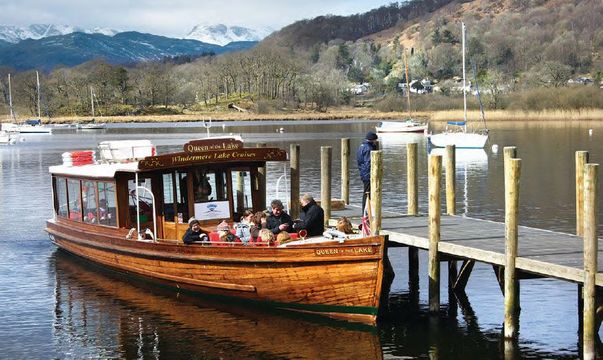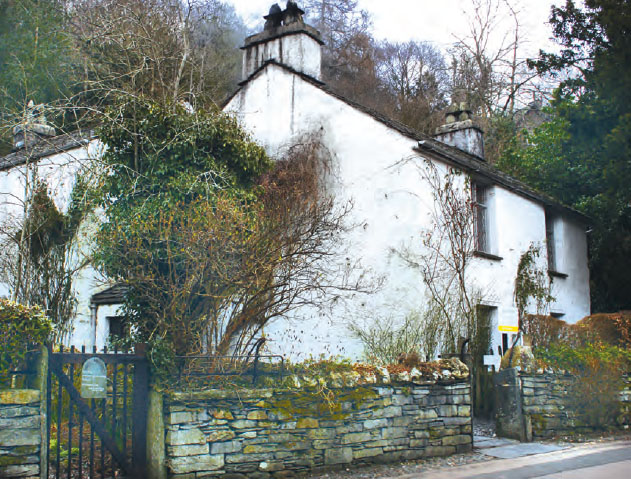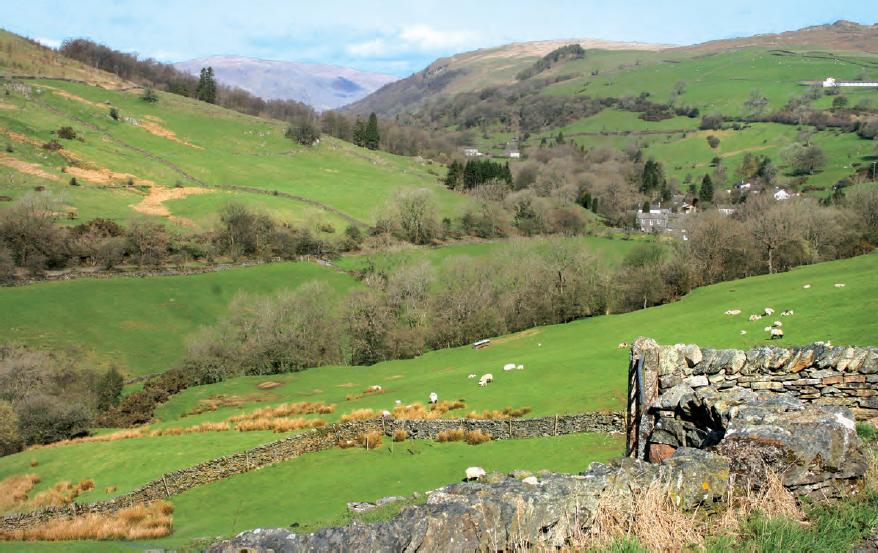
Are you visiting the lake district soon? Then here's everything you need to see and what you can't afford to miss
For all practical purposes, the fells and meres of England’s picturesque northwestern Lake District are the county of Cumbria. For centuries now, the Lakes have drawn hikers and nature lovers, writers, and artists. Popularized in the late 18th century by Romantic poets and painters, this is the original “back to nature” landscape. Any time of year, the attractions and breathtaking scenery make a photogenic backdrop for exploring the region, now the Lake District National Park. Be prepared for crowds and traffic on spring and summer weekends, but there are always plenty of deserted open spaces.
Read more
Getting to the Lakes
Getting to the Lake District can be accomplished by train via a spur line that runs from Oxenholme to Windermere. That’s the end of the line. Getting around in the Lake District has to be done by road (or foot). Whether you’re driving from London or picking up a car in Manchester, it’s a drive north on the M6 through the historic county of Lancashire. Exit at Junction 38 and take the A591 to Windermere. If the timing is right, it’s only a mile or so detour to visit the Elizabethan manor house of Levens Hall and its star attraction - the oldest and most extensive topiary gardens in the world.
The market town of Windermere and adjacent Bowness, which tumbles downhill to the waterfront of Windermere, offer many options for accommodation, including several sprawling Victorian hotels with broad lawns and views over the lake. But do plan ahead - particularly in the busy summer.
On Windermere and Bowness
The largest lake in England, Windermere is the center of Lake District activity. And Bowness is at the center of the 11-milelong lake. The two communities have separate town centers but have virtually grown together with the popularity of Lake District tourism.

Here at Dove Cottage in the village of Grasmere, the poet William Wordsworth wrote many of his most famous works. He is buried with his sister in the parish churchyard down the lane
The Waterside Tourist Information Centre is always a good place to start for information on local events, brochures, and maps. Take a cruise of the lake on the steamship Teal, or one of several other boats, or rent your own boat for the morning. Visit the World of Beatrix Potter, the Windermere Steamboat Museum or take a steam train ride on the Lakeside and Haverthwaite Railway. A few miles north, the Lake District Visitor Centre at Brockhole offers bike and boat hire, and lovely lakeside gardens.
Bowness and Windermere thrive on visitors, offering myriad options for dining and evening entertainment. You can mingle with travelers from across the country and the world at a local pub.
Tales of Wordsworth and Beatrix Potter
Today features an easy excursion into the world of the romantic Lakeland poets, most famously William Wordsworth, who popularized the Lakes as a place to get back to nature. That world became the landscape of Beatrix Potter and her imagination, who lived and wrote on her farm above Coniston Water. Even those who’ve never read the writers will love the day.
Follow the A591 north along the east shore of Windermere through Ambleside to Grasmere. Wordsworth lived here from 1799 to 1808 and wrote many of his most famous poems here.
On the edge of the village, Dove Cottage and garden are open daily. In the pretty stone village center, visit the parish church, where Wordsworth and his sister are buried in the churchyard. Do sample a piece of famous Grasmere gingerbread from the little shop next to the church. Serious fans may also want to visit Wordsworth’s later home at nearby Rydal Mount.
It’s a short ride west to Coniston Water, Hawkshead and Hill Top, Beatrix Potter’s 17th-century farmhouse in the village of Near Sawery. The National Trust maintains the house as she would have known it, and the gardens as Peter Rabbit knew them.
West of the Lakes from Ulverston to Cockermouth
Heading south along Windermere on the A592, there are several great visits at the southern end of the lake, including the Lakeland Motor Museum. Ulverston is the home of comic icon Stan Laurel, and the only museum in the world devoted to Laurel and Hardy (with a cinema that shows their movies continuously). Drive times are not demanding, but you’ll need to choose your stops along the way.

To the east in the Lake District National Park, the sweeping Cumbrian landscape takes on a gentler, more pastoral cast
You might continue further south to visit dramatic Furness Abbey or cut west a few miles on the A5092. The A595 leads north between the Cumbrian peaks and the Irish Sea. This western edge of the Lake District is definitely a less traveled road, which is wonderful for sightseeing. Coastal farms and ocean vistas on your left and the desolate, majestic mountains on your right provide ample reward. Muncaster Castle or the Roman Baths at Ravenglass are possible stops along the way.
Plan an overnight stay in the northern market town of Cockermouth. There are a number of options, but the riverside Trout Hotel on the main street next to Wordsworth’s Birthplace makes a great choice. Time permitting, you might visit the poet’s house or Jennings’ Brewery.
Between the Mountains to Keswick and the East
If time is pressing, take the A66 down the side of Bassenthwaite Lake about 15 miles to Keswick. For a slower, scenic ride in the Cumbrian wilderness, follow the B5289 to Crummock Water and Buttermere, then over high Honiston Pass through Borrowdale to Keswick. The market town of Keswick is the northern base for climbing and hiking in the fells. The oddly interesting Cumberland Pencil Museum at the home of Derwent pencils, and reputedly the world’s largest pencil, makes a great, brief visit. On a plateau just above the town, the Neolithic henge of Castlerigg Stone Circle demonstrates that people have found this rugged countryside an inviting home for 5,000 years.
From Keswick, the A591 leads south along the shore of Thirlmere back to Ambleside and Windermere. Alternatively, continue on the A66 east to Penrith and the M6.
Leaving the Lakes Behind
Time permitting, you may be inspired to spend a day or three in the Lakes hillwalking, painting, or writing poetry yourself. When it’s time to leave, the M6 leads north to historic Carlisle and on to Gretna Green and Scotland. Turn south to Blackpool, Liverpool, Manchester, and Cheshire. Alternatively, follow the A66 through Appleby-in-Westmorland and the Eden Valley to County Durham and Yorkshire. Fascinating stories are everywhere!
* Originally published in 2017. Updated in 2023.





Comments